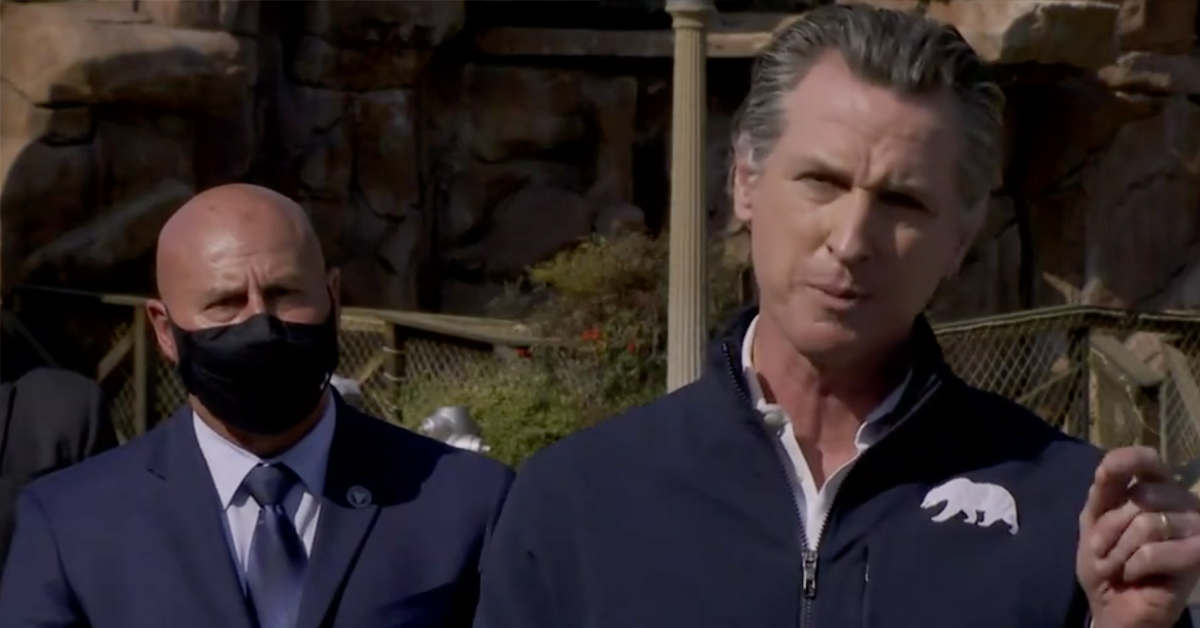My prediction: Fresnans in the not too distant future will be buying legal recreational marijuana within the city limits.
If so, consumers can thank the Regional Jobs Initiative.
Let’s start at the beginning.
The Regional Jobs Initiative (RJI) was the big economic development project from Mayor Alan Autry’s first term. The idea was to bring together the Fresno area’s best minds (including Ashley Swearengin) and most powerful public institutions. They would fix the abysmal local economy. Then they would fix the abysmal Valley economy.
The RJI concept was more than a year in the making. The idea made its first big public splash in September 2003.
The initial goal was to create 25,000 to 30,000 new jobs in the Fresno metro area over the next five years. This was to be in addition to the number of new jobs (modest in quantity though that may have been) that would be created in the normal course of events.
Fourteen years ago, I teamed up with The Bee’s Renee Knoeber and Don Johnson in producing a special report on the Valley economy and the RJI called “Broke…and Broken.”
My point here isn’t to dredge up those old stories. My point is that those stories got old.
They wouldn’t have aged so quickly and so thoroughly if the RJI had been a success. But the RJI wasn’t a success. It is proof of the RJI’s failure that no one talks about the RJI these days. No one (at least in my circle) has talked about the RJI for years.
That wasn’t the dream in 2003. The dream back then was that the RJI would take root and become a permanent and prominent part of Valley discourse. The dream was that Valley residents in September 2017 couldn’t imagine life without the RJI.
There were many parts to the RJI. One of the ideas was to focus local development efforts on sectors where Fresno (the initial test area) was deemed to have structural advantages. These areas were called “clusters.”
Seven clusters were identified: Agile manufacturing, construction, distribution, health care, information processing, tourism and water technology.
But putting people to work was RJI’s main goal.
“The central theme running through the plan is the importance of job training in solving the region’s jobs crisis,” I wrote in the 2003 special report. “The plan’s solution amounts to an unprecedented restructuring of Fresno County’s job training industry. What is now a decentralized industry, where individual training centers operate with little regard to what their competitors are doing, would be transformed into a cohesive unit.”
Why did a Regional Jobs Initiative born amid such fanfare turn into just another plan gathering dust in someone’s basement?
The short answer was delivered (perhaps unintentionally) by Dan Fitzpatrick back in 2003. Fitzpatrick at the time was head of the Fresno Redevelopment Agency, one of many players in the RJI. During my research for the special report, Fitzpatrick took me for a drive to survey some of Fresno’s blighted neighborhoods. These were neighborhoods the RJI was to rejuvenate.
I asked Fitzpatrick if the RJI would succeed. He thought it had a chance.
“But the institutions have to work,” Fitzpatrick said.
He was talking about all the public institutions we’ve come to know: City Hall, the County Hall of Records, Fresno Unified, Fresno City College, Fresno State, the county Department of Social Services, the state Employment Development Department, the Fresno Economic Opportunities Commission, the Fresno County Economic Development Corporation, the Workforce Development Board – on and on went the list.
The passage of time revealed the ironic truth behind Fitzpatrick’s comment. The RJI couldn’t succeed unless these institutions did everything they were designed to do. But if these institutions did everything they were designed to do, the RJI wouldn’t be necessary.
The creators of the RJI had their hearts in the right place for two very good reasons.
First, they understood the importance of work to the dignity of all men and women. They saw that too many Fresnans weren’t working, or were underemployed. They saw the harm this was doing to individuals, families and society.
Second, they knew that government, whether run by conservatives or liberals, needed tax revenue to adequately provide the services that keep our civilization running smoothly. A stagnant economy with poorly trained and poorly paid workers makes effective government all but impossible.
Where do we find ourselves in September 2017?
For the sake of this blog’s brevity, I’ll simply assert that Fresno and the Valley are plagued with a jobs crisis every bit as serious and systemic as the one in 2003 (or at any other period of our history since Dec. 7, 1941). Dig into our labor force participation numbers if you don’t believe me.
Two other factors support my assertion.
Fresno Mayor Lee Brand sees the same dangerous trend lines that spurred Mayor Autry to action some 15 years ago: Too many unemployed people dependent on expensive public services, too few working people paying the taxes that support those services.
Brand tackled this threat last spring when he presented his proposed Fiscal Year 2017-18 budget. He talked about the development plans his Administration has for the “Triangle Area” between Highways 41 and 99.
“Substantial increases in our economic tax base will provide the funding needed to hire more police officers and firefighters, fight blight and homelessness, rebuild our roads and other infrastructure and improve and build new parks and trails,” Brand said.
Brand spoke of the arrival of the Amazon and Ulta Beauty e-commerce distribution centers. He said the jobs from those centers are a blessing. Then he trotted out a chart (the RJI folks loved charts, too).
The chart told a familiar tale.
“Assuming modest growth, we see steady gains and a minimal surplus over that period of time,” Brand said. “But that doesn’t get us where we need to go.
“If we do nothing at all, make no changes to our strategy, it isn’t enough to fulfill our commitment to our city and our residents. It’s not acceptable.
“We need to create 10,000 jobs in the next 10 years. Ten thousand new jobs, using the multiplier effect, actually mean 20,000 jobs due to the increased need for retail, service and support jobs.
“That means our unemployment rate gets cut in half, from 10% to an unprecedented 5%. Those 20,000 new jobs also mean an estimated average of $1,050 of increased tax revenue per job. That’s potentially $21 million dollars more per year by the year 2027.
“My formula for success is: more jobs equals more revenue; more revenue equals better services; better services equals a better quality of life.
“This is my roadmap to building a better Fresno with a better quality of life for all citizens.”
The missing pieces are employers and a workforce capable of attracting the employers.
That brings me to the second factor supporting my assertion that we’re in a jobs/training crisis similar to the one that inspired the Regional Jobs Initiative.
I’m talking about Measure C and Measure X.
One of the RJI’s problems was money. The RJI didn’t have it’s own revenue stream. It depended for its sustenance on the kindness of strangers – in other words, institutional/governmental agencies. Once those agencies got bored with the RJI, it was lights out for the RJI. After all, the RJI was merely an “initiative.” It wasn’t something of substance, such as a community development corporation.
PR-savvy government agencies these days are reading the same tea leaves as Brand. Jobs and the workforce development that goes with them are once again being sold with a heavy hand to Fresnans.
The State Center Community College District in June 2016 asked voters to approve Measure C, a plan to spend $485 million to do all sorts of wondrous things for higher education.
The Fresno Unified School District in November 2016 asked voters to approve Measure X, a plan to spend $225 million to do all sorts of wondrous things for public education.
Both districts said the measures would help prepare their students to become productive citizens. You know – well-trained workers of every sort (including professionals) who pay taxes.
Voters bought both pitches. They handed more than $700 million to State Center Community College District and Fresno Unified School District.
No need for me to remind you that SCCCD and FUSD were prominent players in creation of the Regional Jobs Initiative.
And no need for me to remind you of the Fitzpatrick Effect: The RJI couldn’t work unless established institutions worked; but if the established institutions worked, there would be no need for the RJI.
I have high regard for both districts. My three children are Fresno Unified graduates. My son is a Fresno City College graduate. They all turned out fine.
But if I’m Mayor Brand, I’m worried about my ability to grow city revenues through the dramatic expansion of jobs staffed by a highly trained workforce. The same institutional players (and I’m not talking solely about SCCCD and FUSD) who couldn’t get the workforce-training job done in the RJI in 2003 are in the workforce-training saddle in 2017.
And if I’m a taxpayer, I’m wondering what I’m going to get for that $700 million-plus in bond money and all the other workforce-training money that’s flowing into Fresno these days from Big Government.
That brings us to recreational marijuana.
Recreational marijuana dispensaries will be legal in California come January 1. To cut to the chase, Fresno City Hall’s efforts to plan for the regulation of the marijuana industry in all its forms have been utterly chaotic.
The council on Thursday voted 4-3 to ban recreational dispensaries. The council then voted 4-3 to hire a consultant to delve into all the regulatory issues connected to recreational and medical marijuana and the cultivation of marijuana plants.
These votes come in the wake of a handful of perplexing votes on marijuana regulation.
What’s going on?
I think Brand is laying the groundwork to eventually make recreational/medical marijuana dispensaries a legal part of Fresno’s business landscape.
The Mayor has been around the block. He knows from history that the effective training of a wide swath of the local workforce by the well-heeled institutions that took part in the RJI is a long shot at best.
The RJI didn’t generate those 30,000 jobs. Chances are Brand (through no fault of his own) won’t create those 20,000 jobs.
At the same time, Brand needs a lot more money year in and year out to provide the additional services he has promised to voters.
The Mayor may not like the idea of recreational pot stores in neighborhoods throughout Fresno. But where does he place his policy-making faith? In the taxes generated by those stores? Or in the job-training institutions that turned the RJI into a failure?
Like it or not, marijuana is a winning cluster.
Photo: The Collegian












While recreational marijuana maybe a source of revenue for the City….what will the down side of recreational marijuana cost taxpayers….you know, for things like how will ‘high octane weed’ fuel addiction to cannabis treatment be paid for? Or what will be the cost of policing those ‘driving impaired’ folks? And what kind of ‘cost’ is associated with regulating pot…what is it going to cost tax payers when it comes to guaranteeing the safety and quality of cannabis (THC)? Slippery slope. Oh, and finally there is a ballot measure that has just been filed (signatures now be gathered) that would legalize ‘magic mushrooms.’ The author of this measure tells us that legalizing shrooms is a natural step after legalizing pot.
The RJI failed to take into account three factors. One was the historic resistance by the agribusiness section to any sort of competition for the same labor pool. The second was Fresno’s huge addiction to alcohol, meth and crack cocaine. A steady complaint I heard from employers for 28 years (or as long as I’ve been sober) is that they couldn’t find workers who could pass a drug test. The third was the poor educational outcomes in Fresno and the Valley. Potential companies looking to locate here would turn tail and exit as quickly as possible once they got a look at the community.